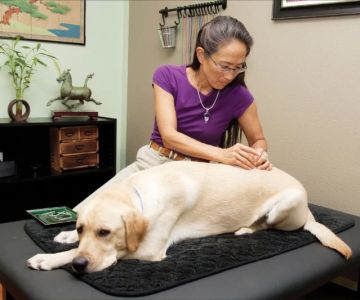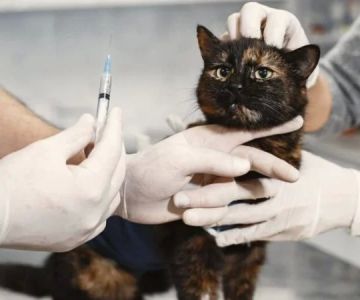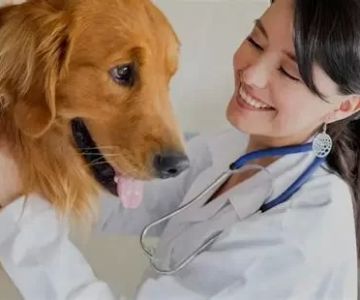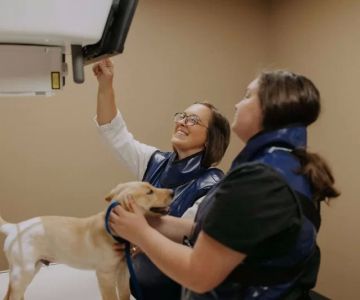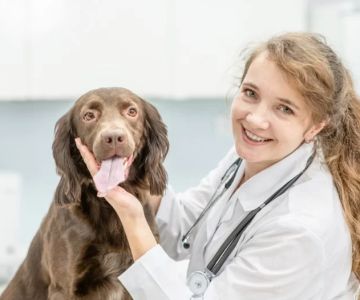What Degree Do You Need to Be a Veterinary Radiologist? A Complete Guide
- 1. Understanding the Role of a Veterinary Radiologist
- 2. The Path to Becoming a Veterinary Radiologist
- 3. Essential Skills and Training for Veterinary Radiologists
- 4. Career Outlook for Veterinary Radiologists
- 5. How to Get Started in Veterinary Radiology
1. Understanding the Role of a Veterinary Radiologist
Veterinary radiologists are medical professionals who specialize in interpreting medical images to diagnose and treat animals. Their role is critical in veterinary care, as imaging is often one of the first steps in diagnosing an illness or injury. Becoming a veterinary radiologist is a rewarding career, offering the chance to make a significant difference in animal health. However, the journey requires dedication and years of specialized education.
What Exactly Does a Veterinary Radiologist Do?
A veterinary radiologist uses various imaging techniques, such as X-rays, CT scans, MRIs, and ultrasounds, to examine animals. They collaborate with veterinarians to help diagnose conditions ranging from broken bones to tumors or internal organ issues. Their expertise in interpreting images can often mean the difference between life and death for an animal, making their role essential in any veterinary clinic or hospital.
2. The Path to Becoming a Veterinary Radiologist
If you're considering a career as a veterinary radiologist, it's important to understand the educational path required. It’s a long journey, but with the right determination and passion for animal health, it can be incredibly fulfilling. Here's what you need to do to get started.
Step 1: Earn a Bachelor’s Degree
The first step in becoming a veterinary radiologist is to earn a bachelor's degree. While there isn’t a specific "radiology" degree, most aspiring veterinary professionals will major in fields like biology, animal science, or pre-veterinary studies. Courses in biology, chemistry, physics, and anatomy will provide the foundation you'll need for veterinary school.
Step 2: Attend Veterinary School
After completing your undergraduate degree, the next step is to attend veterinary school. Veterinary school typically lasts four years, and it provides the specialized education required to become a licensed veterinarian. During these years, you'll take courses in animal health, surgery, pharmacology, and radiology. While general radiology is introduced in veterinary school, veterinary radiology as a specialty is not the main focus at this point.
Step 3: Pursue a Residency in Veterinary Radiology
After completing veterinary school and obtaining your Doctor of Veterinary Medicine (DVM) degree, aspiring veterinary radiologists must complete a residency program in radiology. This can take an additional three years and offers intensive training in advanced imaging techniques, diagnostic skills, and image interpretation. During the residency, you’ll work under the supervision of experienced radiologists to gain hands-on experience.
Step 4: Obtain Certification
Once you’ve completed your residency, you’ll need to pass the certification exam administered by the American College of Veterinary Radiology (ACVR). Becoming board-certified as a veterinary radiologist can take time and effort, but it is an essential step in establishing yourself as a highly qualified professional in the field.
3. Essential Skills and Training for Veterinary Radiologists
Veterinary radiologists need a unique set of skills to excel in their field. Besides the technical expertise required for interpreting medical images, they must also possess excellent communication skills, as they often work closely with other veterinary professionals and pet owners.
Technical Expertise
Veterinary radiologists must be proficient in using complex imaging equipment and interpreting the results. This requires strong knowledge of anatomy, pathology, and advanced imaging technology. A deep understanding of the imaging techniques, such as CT scans, MRIs, and X-rays, is crucial for accurate diagnoses.
Critical Thinking and Problem-Solving
As a veterinary radiologist, you’ll need to use critical thinking to analyze medical images and identify any potential health issues. Often, animals can’t communicate their symptoms, so it’s up to you to interpret the images and work with veterinarians to determine the best course of action for treatment.
Communication and Collaboration
Veterinary radiologists work closely with other veterinarians, specialists, and pet owners. Strong communication skills are essential for discussing diagnoses and treatment options with the team, as well as explaining complex medical information to pet owners in an understandable way.
4. Career Outlook for Veterinary Radiologists
The demand for veterinary radiologists is growing, as more pet owners seek advanced medical care for their animals. According to recent statistics, the need for veterinary specialists, including radiologists, is expected to continue increasing as the overall demand for veterinary services rises. The career offers both stability and the opportunity to make a significant impact on animal healthcare.
Job Opportunities
Veterinary radiologists can work in a variety of settings, including private veterinary practices, animal hospitals, research institutions, and universities. Additionally, many radiologists choose to work as consultants, providing their expertise to veterinary clinics on a freelance basis.
Salary Expectations
Veterinary radiologists typically earn higher salaries compared to general veterinarians due to their advanced training and specialization. On average, the salary for a veterinary radiologist in the United States ranges between $100,000 to $200,000 annually, depending on experience, location, and workplace.
5. How to Get Started in Veterinary Radiology
If you’re ready to take the first step toward becoming a veterinary radiologist, there are several ways to get started. First, ensure that you have a solid academic background in the sciences, particularly biology and physics. Then, look into accredited veterinary schools that offer strong programs in radiology. Lastly, find a residency program that will provide hands-on experience and allow you to refine your skills.
With the right education, dedication, and passion for animal care, you can embark on a fulfilling career as a veterinary radiologist. Whether you're diagnosing pets with complex conditions or helping improve their quality of life, your work will be vital in the field of veterinary medicine.




